Maintaining efficiency in your business operations is crucial for success. One key element that can make or break this efficiency is how well you implement your business process management (BPM) strategies. BPM is about optimizing and streamlining your workflows to ensure everything runs smoothly. However, even the best processes encounter bottlenecks.
A bottleneck occurs when a specific part of your process slows the entire workflow, leading to delays, increased costs, and frustrated team members. Identifying and eliminating these bottlenecks is essential for achieving operations excellence and maintaining a competitive edge.
Understanding Bottlenecks
Bottlenecks are specific points in a workflow where the flow of operations slows down or comes to a halt. Understanding bottlenecks is crucial for improving efficiency and achieving operations excellence.
Bottlenecks vs. Constraints
While bottlenecks and constraints are often used interchangeably, they differ in certain ways. A business bottleneck is a specific part of a process that limits the overall output because it cannot handle the volume or speed required. For example, suppose a particular machine in a production line works slower than the others. In that case, it creates a bottleneck that delays the entire process.
On the other hand, constraints refer to any limitation or restriction within your business operations that prevents you from reaching your goals. Constraints can be external, such as market conditions, or internal, like limited resources. While all bottlenecks are constraints, not all constraints are bottlenecks. The critical difference is that bottlenecks are process-specific, whereas constraints can affect broader aspects of your operations.
Types of Bottlenecks
Bottlenecks in business process management can disrupt business operations and impede progress. They generally fall into two main categories: short-term and long-term.
Short-term bottlenecks are usually temporary and circumstantial. They occur due to unforeseen events that momentarily block progress but don’t lead to significant long-term issues. For example, a team member going on vacation or a computer being unavailable due to a system update can create a short-term bottleneck. These are typically resolved quickly and don’t require major process changes.
Long-term bottlenecks, on the other hand, are systemic issues that consistently slow down workflows over time. These bottlenecks are more significant and can lead to ongoing inefficiencies and delays. For example, outdated business software that frequently crashes can cause a queue of tasks to build up, significantly hampering productivity. Long-term bottlenecks require a more strategic approach to resolve and are crucial for achieving operations excellence.
Within these two categories, there are three specific types of bottlenecks:
- Regulatory Bottlenecks
- These bottlenecks arise from incomplete or ineffective procedures, rules, or regulations. They can occur when a process that once worked no longer functions efficiently due to changes in the company structure or when too many rules bog down a workflow.
- Example: A workflow that becomes obsolete after a company restructuring or a process that was never adequately mapped out leads to confusion and delays.
- Operational Bottlenecks
- Operational bottlenecks occur when people, systems, or tools cannot handle the volume of work. This often happens when approval processes are too slow or when delays in one process negatively affect interconnected processes and departments.
- Example: A workflow that requires approval at multiple stages, causing significant delays, or a bad hire that hinders productivity, creating a bottleneck affecting several departments. Consider the WHY.os to avoid bad hires.
- Infrastructure Bottlenecks
- Insufficient resources or poorly structured processes cause infrastructure bottlenecks. These can occur when critical tasks or actors are omitted during process mapping or when the wrong software is chosen, leading to productivity issues.
- Example: A critical step that was overlooked during process design is now causing delays or using unsuitable software, resulting in productivity bottlenecks.
Understanding these types of bottlenecks is essential for effective operations management. By identifying whether you’re dealing with a short-term or long-term bottleneck and recognizing the specific type, you can take targeted action to resolve the issue and optimize your business process management.
How Bottlenecks Impact Your Business
Bottlenecks can significantly impact business process management and overall efficiency. When a bottleneck occurs, it creates a domino effect that disrupts the flow of your operations. This can lead to increased costs, missed deadlines, and reduced customer satisfaction.
In terms of operations management, bottlenecks can make it difficult to meet production targets, leading to a backlog of work that further strains resources. Over time, this can erode the quality of your services or products and damage your reputation in the market.
Moreover, bottlenecks prevent your business from operating at its full potential, making it harder to scale, innovate, and stay competitive. Identifying and addressing bottlenecks can optimize your workflows, improve productivity, and ensure your business runs smoothly.

Common Causes of Bottlenecks in Business Processes
Even with a solid business process management strategy, bottlenecks can still occur. Understanding the common causes of these business bottlenecks is the first step toward effectively eliminating them from your operations. Identifying these issues early lets you implement solutions that keep your operations running smoothly and efficiently.
Inefficient Workflows
One of the most common causes of bottlenecks is an inefficient workflow. The entire process slows down when tasks are not organized logically or when steps are unnecessary or redundant. Inefficient workflows often arise from outdated practices that haven’t been reviewed or optimized in years. Regularly evaluating and refining your processes is vital to achieving operations excellence and preventing these slowdowns.
Resource Allocation Issues
Bottlenecks often occur when there aren’t enough human resources, technology, or materials to complete a task efficiently. Poor resource allocation can overload certain processes while others remain underutilized. This imbalance can create significant delays, impacting the overall efficiency of your operations management. To avoid this, it’s crucial to regularly assess and adjust how resources are distributed across your business.
Communication Breakdowns
Effective communication is essential for smooth business operations. When communication fails—whether due to unclear instructions, delayed responses, or information silos—tasks can be delayed or executed improperly, leading to bottlenecks. Clear, consistent communication channels help ensure that everyone involved in a process has the information they need to perform their tasks efficiently.
Lack of Automation
In today’s digital age, many businesses still rely on manual processes that could be automated. Manual tasks are often time-consuming and prone to errors, which can lead to bottlenecks. Implementing automation where possible allows you to streamline your workflows, reduce human error, and speed up your business operations.
Cultural and Organizational Resistance
Sometimes, bottlenecks are caused by resistance to change within an organization. Team members might hesitate to adopt new technologies or processes, which can slow progress and create inefficiencies. Overcoming this resistance is crucial for maintaining operations excellence. Engaging with your team, providing adequate training, and communicating the benefits of new processes can help ease the transition and prevent bottlenecks from occurring. This type of bottleneck is also common after business acquisitions.

Conducting an Internal Audit to Identify Bottlenecks
The most effective way to uncover business bottlenecks is through a systematic internal audit. This process will help you pinpoint where your workflows are slowing down and guide you toward solutions that enhance your overall business process management.
Step 1: Define the Scope of the Audit
The first step in conducting an internal audit is clearly defining its scope. Determine which processes or areas of your business you want to focus on. Are you looking at a specific department, a particular workflow, or the entire operation? Establishing the scope will help you set clear objectives and ensure your audit is thorough and targeted.
Step 2: Map Out Current Processes
Once you’ve defined the scope, the next step is to document your current processes in detail. Use process mapping tools to create visual representations of your workflows. This will help you see the flow of tasks and identify any points where things might get stuck. Mapping out your processes also makes it easier to involve critical stakeholders directly engaged in these workflows.
Step 3: Gather Data and Metrics
To effectively identify bottlenecks, you must back up your observations with data. Collect performance metrics such as time to complete each task, error rates, and resource utilization. Key performance indicators (KPIs) specific to your operations management can provide valuable insights into where inefficiencies are occurring. The more data you have, the more accurately you can diagnose the problem.
Step 4: Identify and Analyze Bottlenecks
You can now identify potential business bottlenecks with your process maps and data. Look for areas where tasks take longer than expected, errors are frequent, or costs are higher than usual. Analyze the root causes of these issues using techniques like the 5 Whys or the Fishbone Diagram. Consider different types of bottlenecks and determine how they impact your overall business operations.
Step 5: Prioritize Bottlenecks
Not all bottlenecks are created equal. Some will have a more significant impact on your operations than others. Once you’ve identified and analyzed the bottlenecks, prioritize them based on their severity and effect on your business objectives. Focusing on the most critical bottlenecks will allow you to improve your business process management substantially.

Strategies for Eliminating Bottlenecks
Once you’ve identified bottlenecks in your business operations, the next step is to eliminate them effectively. Here are some practical strategies to help you tackle bottlenecks and streamline your workflows.
Process Redesign
One of the most effective ways to eliminate a business bottleneck is by redesigning the process that causes it. This involves taking a step back and evaluating the entire workflow to identify opportunities for improvement. Simplify overly complex processes, remove unnecessary steps, and reorganize tasks to create a more efficient flow. By redesigning the process, you can eliminate the root cause of the bottleneck and improve overall efficiency.
Resource Optimization
Bottlenecks often occur when resources—such as time, personnel, or equipment—are not allocated effectively. To address this, evaluate how your resources are used and identify areas where they could be better distributed. For example, you might need to reassign tasks, invest in additional resources, or implement cross-training programs to ensure your team can handle multiple tasks.
Implementing Automation
Automation is a powerful tool for reducing bottlenecks, especially in tasks that are repetitive or prone to human error. By automating specific processes, you can speed up workflows, reduce the likelihood of mistakes, and free up your team to focus on more strategic activities. Implementing automation in your business process management strategy can significantly enhance efficiency and reduce the risk of bottlenecks.
Improving Communication
Clear and effective communication is essential for preventing bottlenecks in operations management. Ensure all team members have the information they need to complete their tasks and that communication channels are open and efficient. This might involve regular check-ins, better documentation, or collaboration tools that facilitate real-time communication. Improving communication helps to prevent misunderstandings and delays that can lead to bottlenecks. The WHY.os can help your team significantly improve communication across various departments if appropriately implemented.
Change Management
Introducing new processes or technologies can sometimes create resistance among teams, leading to bottlenecks. Effective change management is crucial to overcoming this resistance and ensuring that new methods are adopted smoothly. Engage with your team early in the process, provide training and support, and communicate the benefits of the changes.
Monitoring and Continuous Improvement
Eliminating bottlenecks is not a one-time task; it requires ongoing effort to ensure your business operations remain efficient and effective. This is where monitoring and continuous improvement come into play. By regularly reviewing your processes and making incremental adjustments, you can maintain operations excellence and prevent new bottlenecks from emerging.
Setting Up Monitoring Systems
You need to establish robust monitoring systems to keep track of your processes and detect potential business bottlenecks early. These systems should collect data on key performance indicators (KPIs) relevant to your business process management. These include metrics like process completion times, error rates, resource utilization, and customer satisfaction. By continuously monitoring these KPIs, you can identify trends and anomalies that may indicate the presence of a bottleneck.
Feedback Loops
Encourage your team to provide feedback on the processes they work with regularly. This feedback can offer valuable insights into areas where workflows might slow down, or additional resources may be needed. Implementing a structured process for collecting and analyzing this feedback ensures you can address issues before they become significant bottlenecks.
Continuous Improvement
The concept of continuous improvement is central to maintaining efficient business operations. This involves regularly reviewing and refining your processes to make them more efficient and effective. Use the data collected from your monitoring systems and the insights gained from feedback loops to identify areas for improvement. Whether fine-tuning a process, introducing new technology, or reorganizing resources, continuous improvement helps you stay ahead of potential bottlenecks and maintain high operations management.

Eliminate Bottlenecks and Elevate Your Business Operations
Effective business process management is vital to achieving and maintaining operations excellence. You can keep your business operations running smoothly by understanding the common causes of business bottlenecks, conducting thorough internal audits, and applying targeted strategies to eliminate these obstacles.
If you want to improve your operations management, consider partnering with 4 Leaf Performance. Our executive coaching services are designed to help you identify and eliminate bottlenecks, optimize your workflows, and achieve lasting success. Contact us today to learn how we can support your journey to operational excellence.



